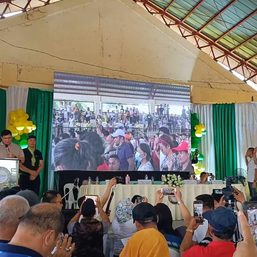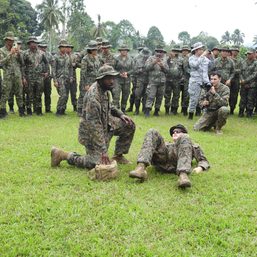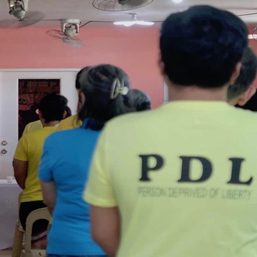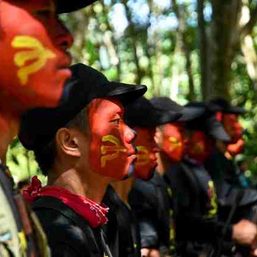SUMMARY
This is AI generated summarization, which may have errors. For context, always refer to the full article.
Filipinos in the Bangsamoro region in Mindanao on Thursday, June 24, paid tribute to the late president Benigno Aquino III, whose presidency revived the stalled peace negotiations with Muslim rebels.
Naguib Sinarimbo of the Ministry of Interior and Local Government of the Bangsamoro Autonomous Region in Muslim Mindanao (BARMM) recalled how the peace process achieved a major breakthrough during his administration.
“He took the risk to revive the peace process when he met with MILF Chair Murad Ebrahim in Tokyo,” said Sinarimbo, referring to the Moro Islamic Liberation Front (MILF), the dominant rebel force in the region that has since laid down its arms.
The unannounced Aquino-Murad meeting in Tokyo in August 2011 paved the way for the peace talks between the Aquino administration and the MILF.
The end to the decades-long conflict soon became a likelihood when both parties signed the Framework Agreement on the Bangsamoro (FAB) in October 2012 in Malacañang, which the Japanese government described as “an important first step toward the realization of the final agreement concerning the Mindanao Peace Process.”
FAB called for the creation of a new political entity that was envisioned to replace the Autonomous Region in Muslim Mindanao (ARMM).
This resulted in the signing of the Comprehensive Agreement on the Bangsamoro in March 2014, the final peace agreement between the two parties.
As written in the first page of the document, “this Comprehensive Agreement is a product of the pursuit for a solution to the Bangsamoro Question with honor, justice, and dignity for all concerned. It ends the armed hostilities between the two Parties and provides for the negotiated political settlement of the Bangsamoro Question, thereby ending the armed conflict between the GPH and the MILF, and promoting peace and stability in this part of the world.”
Iona Jalijali of the Center for Humanitarian Dialogue was working with the Office of the Presidential Adviser on the Peace Process when the 2015 Mamasapano incident happened, a botched police operation to arrest a top terrorist but which ended up killing elite policemen and MILF rebels – and stained Aquino.
“When people talk about his administration and the Bangsamoro peace process, they usually just talk about Mamasapano and its aftermath. They fail to recognize how we never would have gotten to where we got without his personal attention and individual advocacy. The Comprehensive Agreement on the Bangsamoro was, undeniably, his baby,“ she said.
Drieza Lininding of the Moro Consensus Group, a staunch critic of the Aquino administration on issues about Mamasapano and the crafting of the Bangsamoro law, acknowledged that the late president’s term allotted time and resources for the peace process.
“Walang BOL ngayon kung walang Comprehensive Agreement on the Bangsamoro (CAB) na pinagusapan ng ilan taon sa panahon niya. Mas nakilala ang Bangsamoro at ang ating mga adhikain sa panahon niya.”
(There will be no Bangsamoro Organic Law (BOL) if not for the Comprehensive Agreement on the Bangsamoro which was pushed during his time. Our advocacies as Bangsamoro were heard during his administration.)
In January 2019, the Commission on Elections announced that the Bangsamoro Organic Law was deemed ratified following the positive results of the plebiscite in the Bangsamoro.
Today, the MILF is now running BARMM, just as what Aquino had hoped. – Rappler.com
Add a comment
How does this make you feel?










![[Newsstand] Time to negotiate peace again with the CPP-NPA](https://www.rappler.com/tachyon/2024/05/negotiate-peace-again-may-10-2024.jpg?resize=257%2C257&crop_strategy=attention)

![[OPINION] The CPP-NPA’s 3rd Rectification Movement is bad news to the peace process](https://www.rappler.com/tachyon/2024/01/tl-cpp-npa-peace-talk-rectification.jpg?resize=257%2C257&crop=366px%2C0px%2C1080px%2C1080px)
![[WATCH] In the Public Square with John Nery: 10 years of peace, recommitting to the Bangsamoro peace process](https://www.rappler.com/tachyon/2024/01/Episode-62-In-the-Public-Square-LS.jpg?resize=257%2C257&crop=395px%2C0px%2C1080px%2C1080px)

There are no comments yet. Add your comment to start the conversation.